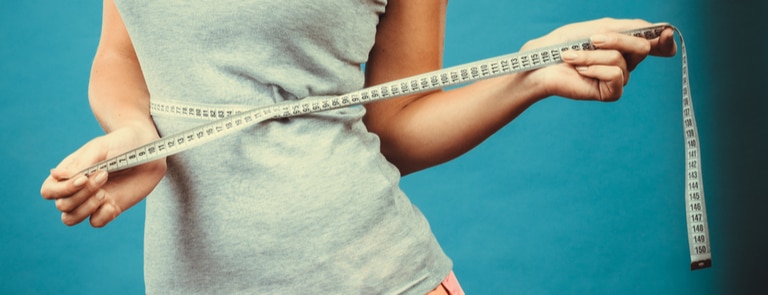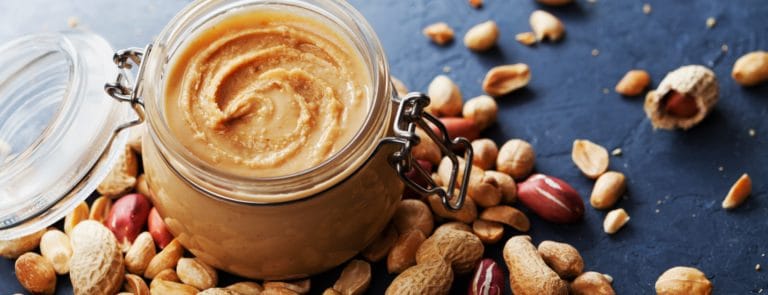15% off €35 OR 20% off €45
What is the 5 2 diet? The pros & cons and what you can eat

There are lots of different diet plans out there, with one of the more recent ones including the 5 2 diet, which involves intermittent fasting.
We caught up with one of our nutritionists, Amrit Kaur Khaneja, for her insight on this popular diet, including the advantages and disadvantages of going 5 2; what you can eat and drink and, more importantly, if it really works….
What is the 5 2 diet?
It essentially involves having the best of both worlds.
On the 5 2 diet plan, you can eat what you like for 5 days of the week, and then dramatically scale back your calorie intake for 2 days (hence the 5:2 diet name).1
Supporters of the diet like the fact it’s relatively simple to follow compared to other diets.
They also view the fact you can eat whatever you fancy for the vast majority of week and only spend a small proportion of your time ‘dieting’ as a real plus point too.
People on the 5 2 diet are advised to eat their usual ‘normal’ amount of calories for 5 days, followed by 2 days when they must eat 25% of their usual calorie intake.
These 2 days don’t have to be consecutive days and involve eating no more than 500 calories for women and 600 calories for men.
When following the diet, there aren’t certain things you can and can’t eat.
And it’s for this reason, that it’s so widely talked about and tried because you can, essentially, be on a diet and still be ‘allowed’ to eat chocolate cake (ideally only every now and then).
Women who follow the 5 2 diet can reportedly lose up to 1Ib a week and men can lose around the same, and possibly a little bit more.
Summary
- The 5 2 diet involves eating a balanced diet for 5 days and fasting for 2 days of the week
- On the fasting days, you can only consume 25% of your usual calorie (food and drink) intake
- For women that’s 500 calories a day, and men, that’s 600 calories a day
What are the pros of the 5 2 diet?
The 5:2 diet plan has been attracting a lot of attention and its popularity has been growing because of the fact it’s based on intermittent fasting; where you rotate between periods of fasting and eating.
The 5:2 diet involves eating a healthy, balanced diet for 5 days every week and fasting (where you consume only 500 to 600 calories) on the other 2 days.
Research has found that intermittent fasting has been considered an effective way of losing weight and is beneficial for a range of health conditions, such as heart health.
This diet is flexible compared to other calorie-restricting diets because the none-fasting days do not specify which food to eat or involve set meals, which is one of the main reasons why it’s so popular.
However, that doesn’t mean you should eat ‘junk food’ during those 5 days; you should ideally be eating a healthy, well-balanced diet.
The other benefit of being on the 5:2 diet is that you can choose which days you want to fast on, and which days you want to follow your healthy diet plan.
Summary
- 5 2 diet pros – it’s really flexible. You can choose when your fasting days are
- You don’t have to diet all week long
- You aren’t told what you can and can’t eat
What are the cons of the 5 2 diet?
This diet isn’t suitable for anyone who is unable to fast.
For example, people who need to control their blood sugar levels, pregnant women, and those with nutrient deficiencies or a history of eating disorders.
On the fasting days, due to the fact people are considerably restricting their diet, it’s not uncommon for them to experience one or more of these unwanted side effects, such as constantly feeling hungry, mood swings, feeling irritable and difficulty concentrating.
Another possible downside to doing the 5 2 diet is that because it’s non-specific (e.g. you aren’t told what you can and can’t eat every day) some find it difficult to follow when first starting it.
This means that people with already unhealthy diets may misunderstand the concept of ‘normal days’ and actually take on more calories than necessary or unhealthy food, which will reduce the effectiveness of the diet.
More research is also needed in this area in terms of the effectiveness of the diet on a long-term basis.
Summary
- 5 2 diet cons – it’s not suitable for everyone
- You can experience unwanted side effects (e.g. hunger pains and irritability) on the fasting days
- It’s not structured enough
Can you exercise while doing the 5 2 diet?
Yes, exercise is still an option and goes hand-in-hand with eating a balanced diet on your 5 ‘normal’ eating days.
Exercising on fewer calories can reportedly increase weight loss and improve overall health and fitness.
It may also potentially help people minimise and manage their hunger pains.2
Studies have found that fasting has no negative impact on people’s ability to do some form of moderate activity.
However, it’s important to only do what you know your body can handle; don’t push yourself too much, especially if you are fasting.
It’s also important to consider the fact that cardio exercise results in your body using its fat stores, so you may want to do cardio when fasting to really benefit from this effect.
High-intensity interval training (HIIT) is a form of exercise that’s well suited to those fasting days.
Taking part in short bursts of intense exercise has been proven to continue to burn fat long after the exercise has been completed.
Summary
- You can drink a range of hot and cold drinks on the 5 2 diet
- People typically lose up to 1 to 2Ibs a week
- You can still exercise while on the diet, including on your fasting days
Does the 5 2 diet really work?
The 5 2 diet has been recognised by many health professionals as an effective way to lose weight.
Several recent studies have published that on alternate-day fasting and chronic disease prevention and the effects of intermittent fasting on health, ageing and disease also support the diet.
While other research has found that fasting in accordance with the body’s natural rhythms alongside a healthy lifestyle and diet, may also boost the effectiveness of diets such as the 5 2 diet.3
Takeaway
We hope you now feel fully informed about the 5 2 diet.
If you are planning on following it, make sure you set out your diet plan and the days you are going to fast beforehand, and if there are any reasons you believe you should not be following it, speak to your GP or another medical professional before starting it.
Now that you’ve read about the 5 2 diet, would you like to learn about the OMAD diet?
Take a look at this article, ‘OMAD Diet: What is it?’ for a useful overview.
You also asked...
When it comes to those 2 days when you can’t eat more than 500 calories during that day, what do people eat? And how do they make sure that what they eat will keep their body healthy?
On these fasting days, it’s advisable to consume foods that provide enough energy, but also leave you feeling fuller for longer because your calories are extremely restricted.
Lean protein will provide you with the energy that’s needed to get you through the day and keep you feeling full longer after you’ve eaten it. Examples of lean protein include: beans, peas, lentils, white fish and chicken.
Fibre-rich foods, such as wholegrain cereals and pasta, berries, pears, broccoli and carrots, that are low in calories also have the same effect.
Eating larger quantities of this type of food will really help to make you feel full up for longer.
They also help with digestive and bowel health, adding bulk to stools and preventing issues, such as constipation, which is a common side effect of eating less food.
Meanwhile, complex carbohydrates, such as oats, beans and quinoa, are slow digesting and provide the brain with the energy it needs during your fast days. Generally speaking, 100g of cooked oats contains 66 calories.
Summary
- On the fasting days, it’s important you eat food that gives you plenty of energy and fills you up for longer
- The best fasting food includes lean protein and food that contains fibre and complex carbohydrates
There are so many different diets for people to choose from, including different versions of intermittent fasting diets.
The main difference with the 5 2 diet is that it doesn’t focus on excluding a specific food group, i.e. carbohydrates, fats and protein.
Meanwhile, fasting only takes place for 2 days of the week – this freedom of choice means there’s less chance of breaking the diet.
As with food, your drinks aren’t that restricted on the 5:2 diet plan. The diet supports drinking black tea and coffee, herbal teas and diet drinks. (Note: While you can have milk in your hot drinks, it does contribute towards your overall calorie count).
You can also drink as much water as you like on the 5 2 diet too, which is something we should all drink plenty of to keep us properly hydrated on a daily basis. During those fasting days, it may also help you with feeling fuller for longer too.
Because the diet involves following a variety of food choices, the results differ from person-to-person. However, people can typically expect to lose between 1 to 2lb or 0.5 to 1kg a week. This result is based on people eating a healthy, balanced diet for 5 days of the week.
The advice in this article is for information only and should not replace medical care. Please check with your GP or healthcare professional before trying any supplements, treatments or remedies. Food supplements must not be used as a substitute for a varied and balanced diet and a healthy lifestyle.
Last updated: 22 November 2021



